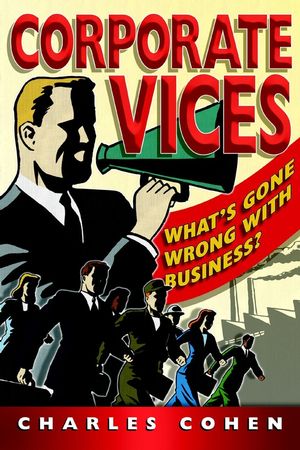Corporate Vices: What's gone wrong with business?ISBN: 978-1-84112-435-3
Paperback
256 pages
December 2002, Capstone
 This is a Print-on-Demand title. It will be printed specifically to fill your order. Please allow an additional 10-15 days delivery time. The book is not returnable.
|
||||||
Corporate Vices uncovers the real performance gap in modern
corporations between good business practice that builds companies,
and bad corporate habits that eventually bring them down. It builds
a detailed picture of how wayward corporations often try too hard,
think too little, and forget too much. And it offers a sharp
contrast with companies, large and small, that are good businesses,
and how they manage to stay that way.
Looking behind the headlines of spectacular corporate disasters, such as Enron and Marconi, as well as corporations that are under pressure and going nowhere, Corporate Vices identifies the common theme of badly run companies, that they fail to realise, or just forget, the importance of business basics, such as productivity, as they explore ever more sophisticated and expensive ways of satisfying other more immediate, like keeping cash profits high to satisfy shareholders - even at the expense of productivity. Corporate Vices explores the complex roots and the story of how corporations have allowed themselves to turn business logic on its head with such ease.
Corporate Vices puts an alternative way of running companies on the table in its many examples of good businesses. These are companies that manage to keep their eye on the ball, even at a price: not achieving corporate glory, turning down the latest technology, and opportunities to enter new markets.
Most of all, Corporate Vices makes it clear how to spot the difference, and then to fix it. It asks the questions, which everyone stuck in a bad company can't seem to answer, like,
* Where did we start to go wrong?
* What does the CEO think he's doing?
* Why can't anyone make a decision any more?
* Whose idea was this merger?
Looking behind the headlines of spectacular corporate disasters, such as Enron and Marconi, as well as corporations that are under pressure and going nowhere, Corporate Vices identifies the common theme of badly run companies, that they fail to realise, or just forget, the importance of business basics, such as productivity, as they explore ever more sophisticated and expensive ways of satisfying other more immediate, like keeping cash profits high to satisfy shareholders - even at the expense of productivity. Corporate Vices explores the complex roots and the story of how corporations have allowed themselves to turn business logic on its head with such ease.
Corporate Vices puts an alternative way of running companies on the table in its many examples of good businesses. These are companies that manage to keep their eye on the ball, even at a price: not achieving corporate glory, turning down the latest technology, and opportunities to enter new markets.
Most of all, Corporate Vices makes it clear how to spot the difference, and then to fix it. It asks the questions, which everyone stuck in a bad company can't seem to answer, like,
* Where did we start to go wrong?
* What does the CEO think he's doing?
* Why can't anyone make a decision any more?
* Whose idea was this merger?



